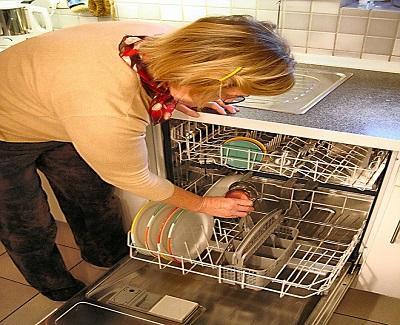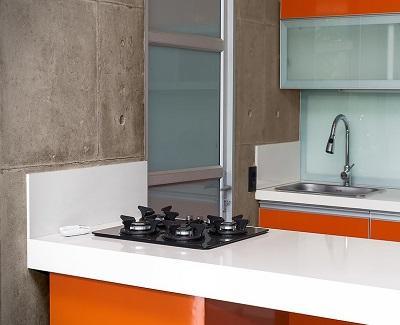Green tech has come a long way in the last 20 years. Appliances are more efficient, cabinets and countertops are being constructed with formaldehyde free bindings and low VOC’s. Sustainable kitchen remodels are no longer an expensive afterthought, they’re the financially viable standard.
Appliances
When replacing appliances the biggest thing to consider is Energy Star rating. Energy Star is a program backed by the US government that labels products based on their energy efficiency. Their products are 10-50% more efficient than regular appliances. Energy Star appliances vary in their efficiency, but any appliance with an Energy Star label will be more efficient than an appliance without one. In addition to being more energy efficient, most utility companies offer a rebate when you purchase products with the Energy Star Label.
The main appliances to consider when doing a sustainable kitchen remodel are the dishwasher, refrigerator, oven and stovetop. The most efficient dishwashers utilize a quick wash cycle and have an air dry option as opposed to using a heater to dry the dishes. Another option to consider is a booster heater. Booster heaters heat water as it enters the dishwasher, which allows you to operate the dishwasher at a lower temperature. Models with this feature are more expensive, but the energy savings will make up for that in the life of the dishwasher.

Refrigerators have come a long ways in the past couple decades. In fact on average, Energy Star rated refrigerators are 75% more energy efficient than they were 20 years ago and updating a refrigerator will save $130 per year on average. Having a freezer on top will save an additional 10-25% more energy than its side by side counterpart. Placing the refrigerator as far away from the stovetop as possible will also help to save energy.
New ovens and stovetops don’t come with federal energy regulations so none of them come with an Energy Star label, but there is a big variance in their energy efficiency. The most energy efficient stovetops use induction technology. Essentially it uses electromagnetic waves to turn the bottom of the pot or pan into a heating surface. Induction stovetops utilize 90% of its energy output, as opposed to 55% for a gas burning stove and a 65% for an electric stove. The technology does require steel or cast iron pots and pans to react with the magnetic field. Induction stovetops are significantly more expensive than its gas and electric counterparts, but it will save on electricity so if you are going for the most “green” stovetop or you cook most days than an induction stovetop is the best bet.
When replacing an oven choose one that utilizes convection technology and is self cleaning. Convection ovens use a fan to circulate the air. This allows it to cook food evenly and at a lower temperature, therefore using less energy. Self cleaning ovens require a high standard of insulation so that they can reach the temperatures necessary to turn food particles into ash. This high level of insulation allows the oven to retain heat better than other ovens and therefore use less energy to reach and maintain temperatures.
Cabinets and Countertops
When choosing cabinets and countertops the main thing to consider is recycled and sustainable material. Look for cabinets certified by the Forest Stewardship Council. They are produced using sustainable forest practices, use formaldehyde free glue, low amounts of VOC’s (volatile organic compounds) and no toxic fumes. Eco-friendly countertops are made from recycled or sustainable material and utilize low toxicity binders. A good example of eco-friendly countertops are Vetrazzo countertops, which are made from 85% recycled glass. If you want to save a little more money, you can install the cabinets and countertops on your own without too much trouble.
Other Recommendations
Outside of appliances, cabinets and countertops there are a few other things to consider when doing a sustainable kitchen remodel. Water filtration is a big deal, most people get the majority of the water they drink from home and it should be as clean as possible to avoid the myriad of illnesses that can be caused by unclean water. A water filter below the sink is you best option. They have ten times the filtering power to remove heavy metals, bacteria and pesticides compared to faucet filters.

Ventilation is another thing to consider. Indoor air quality is two to five times more polluted than outdoor air so it’s best to utilize natural ventilation that replaces indoor air with outdoor air if possible. A quality ventilation hood above your stove is essential as well. A good ventilation hood will keep your kitchen air cleaner by sucking out the particles and toxic air that can build up when cooking. They also help to remove heat as well. A copper ventilation hood is the most sustainable as copper is almost endlessly recyclable.
One of the more simple things you can do to increase your kitchens sustainability is to use energy efficient light bulbs. Fluorescent light bulbs use 50-90% less energy and saves an estimated $40 over its lifetime according to Energy Star.
Remodeling a kitchen is a big deal and shouldn’t be started flippantly. There have been a lot of suggestions in this article, but don’t feel that all of them need to be completed in one fell swoop. It’s completely fine to complete your remodel in small steps. The financial investment is significant, but it will pay for itself in the long run with the rebates and lower energy bills. When you’re done you’ll have an eco-friendly, energy savings futuristic kitchen that will be the envy of all your friends!
